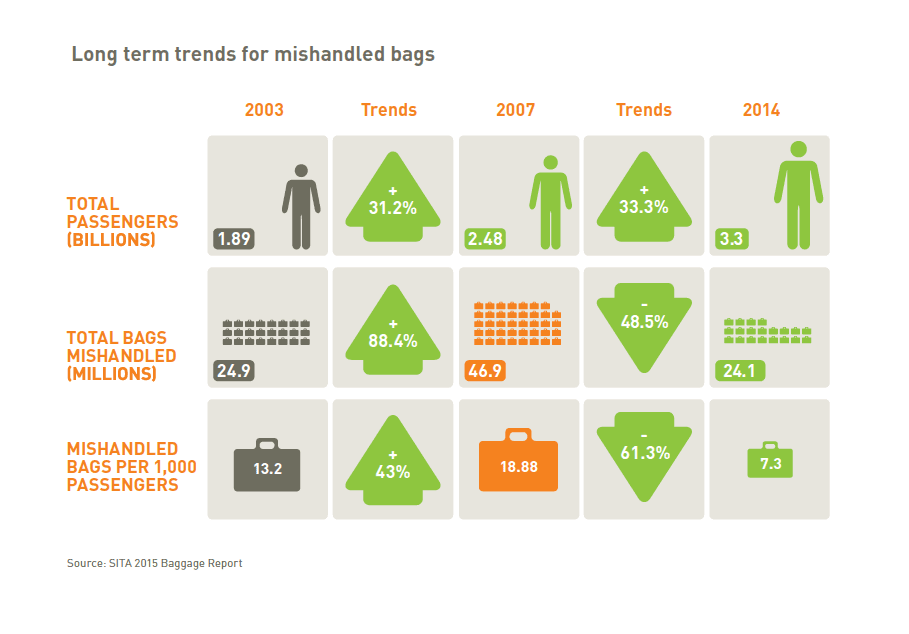SITA Reports Drop in Rate of Mishandled Bags
Share

Despite the increasing number of air travelers in the past seven years, the rate of mishandled bags has dropped 61 percent, says SITA in its 2015 Baggage Report that was released today.
The number of bags that were “delayed, damaged or pilfered” fell from 18.8 bags per 1,000 passengers in 2007 to 7.3 bags in 2014. Last year, more than 80 percent of those mishandled bags were delayed because of loading and tagging errors or restrictions. Half of those bags were delayed due to mishandling during layovers, but most were returned to their owners within one or two days.

SITA says the decline in mishandled bags has saved the industry $18 billion in operating costs and that improvement of baggage handling can be attributed to advancements in self-service baggage technology and automation processes such as print-at-home bag-tagging offered by Alaska Airlines, Iberia and Qatar Airways on certain flights, and RFID tags with QR codes used by Lufthansa.
“Passengers will be more able to prepare for their journey in advance, at home with less stress, giving them more precious time at the airport before departure,” said Michael Harwernth, project manager Passenger Services Interactive at Lufthansa.
But the report also warns of a correlation between passenger growth and the mishandling of bags.
“Rising passenger numbers will continue to place pressure on baggage infrastructure and processes, so the industry cannot afford to become complacent,” Francesco Violante, CEO of SITA, said. “All industry partners will need to continue to invest, collaborate and focus on baggage management.”
In order to have an effective baggage system, airports and airlines have to work together to create a cohesive infrastructure. As cited in the report, “delivery of improvements is not necessarily consistent worldwide.” Additionally, “airports require airlines to be ready with their applications, otherwise the equipment will sit unused.”

Change is happening gradually. SITA states that by 2017, 59 percent of airports will provide self-service kiosks and 69 percent of airlines will provide real-time updates on the location of their bags with notifications that could be pushed through smartphone apps.
Etihad Airways is even setting up a Baggage Centre of Excellence with customer service around the clock. Paul Smith, general manager, Airport Services at Etihad explains that as an airline that is part of a large codeshare network and passengers that are often on connecting flights, baggage is a high priority for them.
“Going forward, our guests should be able to see where their bags are – after all, it’s an interactive enhancement to their travel experience,” he said. The SITA report also echoes this: “Today’s passengers are hungry for more autonomy when it comes to processing their luggage and more information about what is happening to their bags on the journey.”



